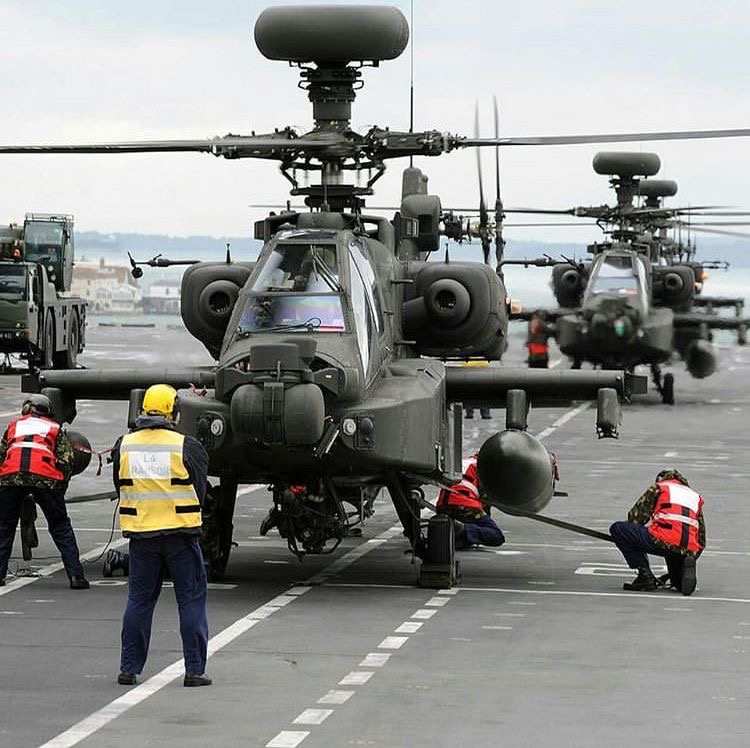
The helicopters in the image are Boeing AH-64 Apache attack helicopters, among the most recognizable and capable combat aircraft in modern military aviation. Developed by Hughes Helicopters in the 1970s and later produced by McDonnell Douglas (now Boeing), the Apache has become a cornerstone of armed forces around the world. It is designed for close air support, anti-tank warfare, and armed reconnaissance, combining heavy firepower, advanced sensors, and exceptional maneuverability.
At first glance, the AH-64 Apache stands out for its distinctive profile. Its tandem cockpit seats the pilot in the rear and the co-pilot/gunner in the front, giving each clear visibility and control over the aircraft’s systems. The helicopter’s four-blade main rotor and two-blade tail rotor are designed to handle demanding combat conditions, including high temperatures and dusty environments. The Apache’s rugged frame allows it to operate in challenging terrain, from deserts and mountains to dense forests. It can also continue flying even after sustaining considerable damage, a feature that reflects its combat-focused engineering.
One of the defining characteristics of the Apache is its weaponry. The helicopter is equipped with a 30mm M230 chain gun mounted beneath the fuselage, capable of firing up to 625 rounds per minute. In addition, its stub wings can carry a mix of AGM-114 Hellfire missiles, Hydra 70 rockets, and sometimes air-to-air missiles for self-defense. This combination gives the Apache a powerful mix of precision and flexibility. It can engage armored vehicles, fortifications, or enemy personnel with deadly accuracy while providing cover for ground troops.
Beyond its weapons, the Apache’s electronics and targeting systems make it a formidable platform. The helicopter uses the Target Acquisition and Designation System (TADS) and the Pilot Night Vision Sensor (PNVS), housed in the distinctive sensor turret on its nose. These systems allow the crew to detect, track, and engage targets day or night, even through smoke, fog, or darkness. In newer variants like the AH-64E Apache Guardian, improved radar and data link systems enable pilots to share real-time information with other aircraft and command units, enhancing coordination across the battlefield.
The Apache’s effectiveness has been proven in numerous conflicts since its introduction in the 1980s. It first saw action during the U.S. invasion of Panama in 1989 and later played a significant role in the Gulf War, where it was instrumental in destroying large numbers of Iraqi armored vehicles. Since then, it has been used in Afghanistan, Iraq, and other operations around the world, both by the U.S. Army and allied nations such as the United Kingdom, Israel, and India. Each engagement has reinforced its reputation as one of the most reliable and versatile attack helicopters ever built.
In summary, the Boeing AH-64 Apache is not just a helicopter—it is a symbol of modern air combat capability. Its blend of speed, firepower, survivability, and advanced technology has kept it relevant for nearly five decades, with continuous upgrades ensuring it remains effective on future battlefields. The helicopters in the image represent this enduring legacy of innovation and military strength.


